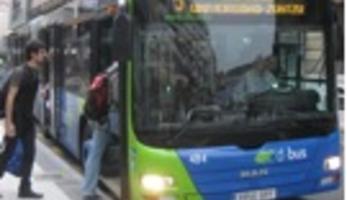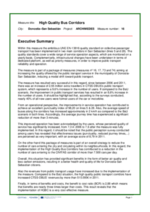High-quality bus corridors
Basic Information
Mobility solution ID
16
Timeline
- complete
Project
Summary
Timetable reliability and customer satisfaction were only two of the criteria to be addressed by Donostia-San Sebastian in their implementation of ambitious quality standards on two main urban bus corridors. The city strived to deliver safer, more comfortable and reliable public transport experience to its citizens.
Implementing sustainable mobility
This measure aimed at implementing the ambitious UNE EN-1313816 Spanish quality standard to the collective passenger transport on two main bus corridors in San Sebastián. Complementarily, infrastructural changes have been undertaken in terms of dedicated platform, as well as priority measures, in order to improve public transport reliability and operation. As a result, the corridors combine dedicated bus lanes and public transport priority with all dimensions of quality.
The quality standards cover eight different aspects, which are monitored by the certification body on a yearly basis:
- Offered service
- Accessibility
- Information
- Waiting time and service frequency
- Customer attention
- Comfort and cleanliness
- Security
- Environmental impact
The ultimate goal of this package of measures was to reach an increase in passengers, as well as in users' satisfaction.
Progress
Within this measure, DBUS introduced new enhanced bus services along the two high quality corridors according to the UNE EN-13816 quality standard (lines 5 & 28). Dedicated lanes and PT-priority formed the backbone for the high quality service. The city of Donostia-San Sebastian implemented 5 additional kilometres of dedicated lanes brining the total to 12 kilometres. Also the UTC´s were reprogrammed to ensure PT priority along the two corridors (80 reprogrammed UTCs in crossroads to ensure PT priority).
From the operational side, the main improvements were:
- Lines 5 and 28 are now completely served by 18 metre articulated buses (high capacity).
- Service frequencies of 6-8 minutes.
- Contactless payment system.
- Improved punctuality, reliability by means of the new bus management system.
- Improved accessibility, security and intermodality standards.
- Clean and ecological buses: biofuels 30 percent blend, EEV engines, less noise.
- Traveller information system: at stops, onboard, on mobile phones and on website.
- Renewed attractive image: little frog and green-blue colours.
An important element of quality is the feeling of security among the bus passengers. As part of this measure, CTSS installed 22 security cameras in the buses that run along the high quality corridors (all buses that serve lines 5 & 28).
Yearly promotion campaigns were organised to promote the service improvements.
Outcomes
The measure was part of a package of 4 CIVITAS measures aimed at increasing the quality offered by the public transport service in the municipality of Donostia-San Sebastián, inducing a modal shift toward public transport. The measure has been very successful with 2,55 million additional travellers per year (9,6% increase between 2006 and 2011) in DBUS’s public transport system. According to the surveys conducted, nearly 40% of all new users were former car drivers or motorbike users. From an operational perspective, the improvements in the service contributed to achieve an excellent punctuality index of 98,20 on lines 5 & 28. The average speed of buses along the corridors increased approximately in 2 km/h as compared to the Business as Usual scenario for both lines. In practice this means that the average journey time were reduced with more than 3 minutes. The users, whose perceived quality of service significantly increased from 7.3 to 7.6, acknowledged this improved operation. Overall, this situation provided significant benefits in the form of better air quality and less carbon emissions, resulting in a better health and quality of life for Donostia-San Sebastian citizens (for example, in 2011 it was estimated that 88 tonnes of CO2 were saved as compared to the Business as Usual situation). The revenues from public transport usage increased due to the implementation of the measure. The Cost-Benefit Analysis conducted revealed that benefits are nearly three times larger than costs. This result reveals that the implementation of High Quality Bus Corridors is a very cost-effective undertaking.








